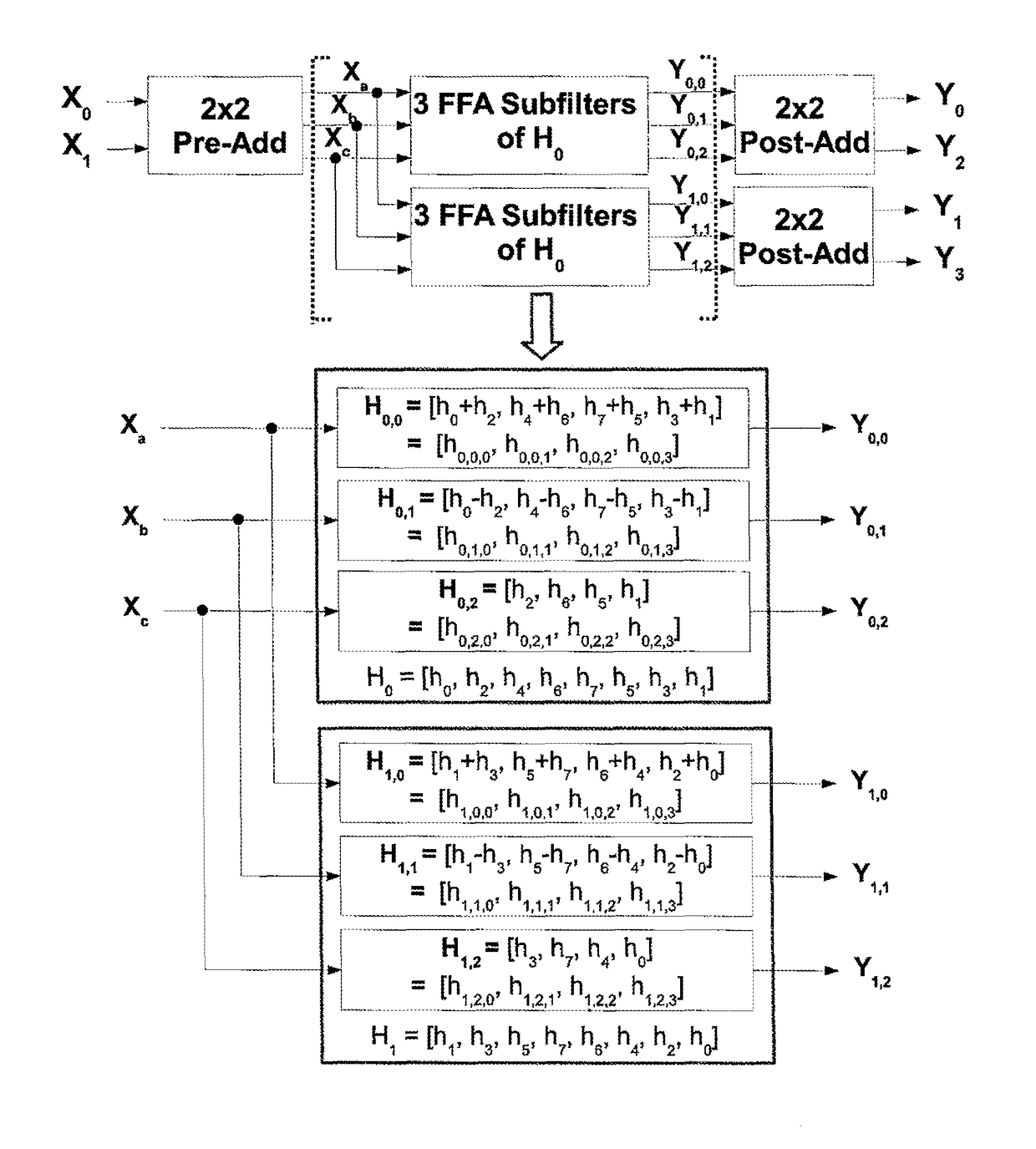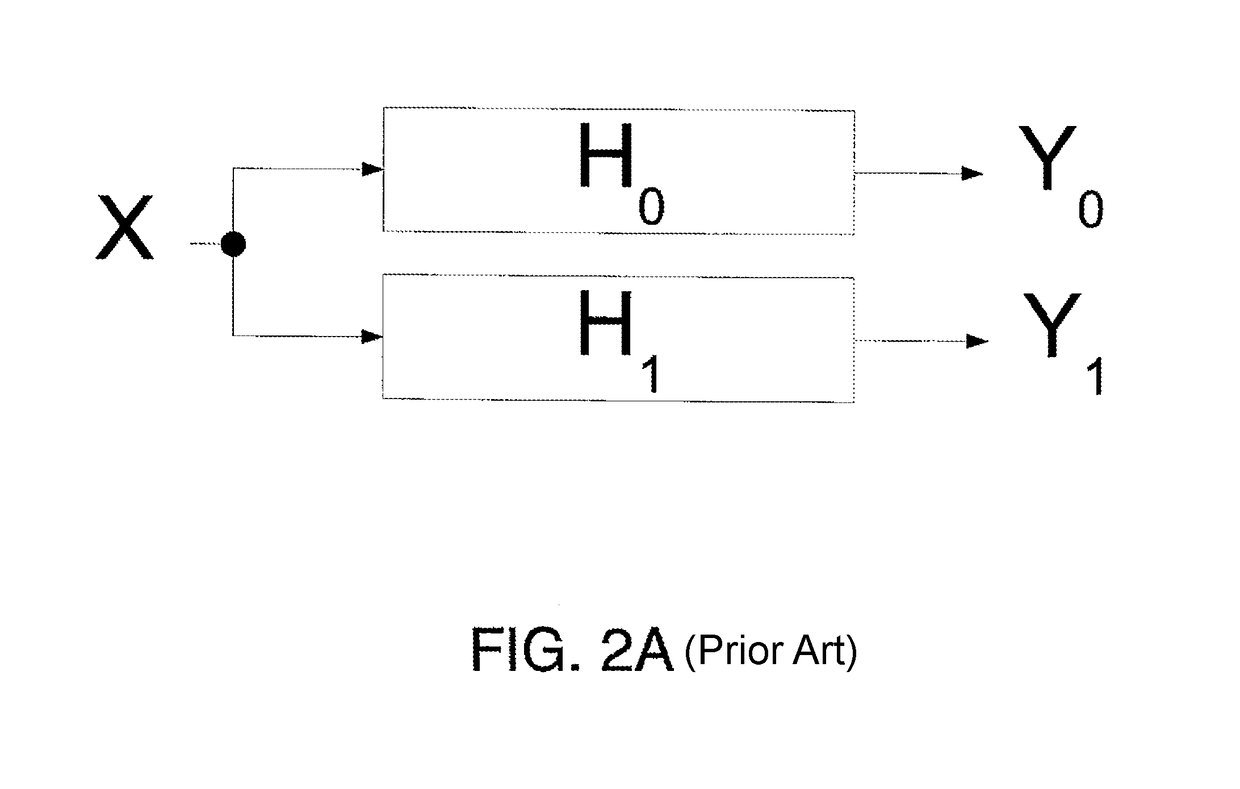Fast FIR filtering technique for multirate filters
a filtering technique and filtering technology, applied in the direction of electrical equipment, digital technique networks, impedence networks, etc., can solve the problems of high sampling rate necessitated by these wideband signals, significant computational burden on the fpga which processes digital signals, and many traditional fir filter structures not directly applicabl
- Summary
- Abstract
- Description
- Claims
- Application Information
AI Technical Summary
Benefits of technology
Problems solved by technology
Method used
Image
Examples
Embodiment Construction
[0095]Sample rate converters are a special class of multirate FIR filters. Two main types of sample rate converters exist: interpolators and decimators. Since a decimator can easily be obtained by transposing the signal flow graph of an interpolator [14], the discussion which follows concentrates on interpolators.
[0096]The polyphase decompostion of a single-input 1-to-M interpolator [15] is expressed in the z-domain as shown below.
[0097]Y(z)=H(z)X(zM)=∑i=0M-1z-iHi(zM)X(zM)=∑i=0M-1z-iYi(zM),(13)
where
[0098]Hi(zM)=∑j=0K-1hi+jNz-jM
for N=KM. If the interpolator receives more than one input sample on every clock cycle, a specialized filter structure is required for the implementation. This paper proposes an FFA-based architecture that reduces the multiplier and adder requirements for symmetrical FIR sample rate converters. In the case of an L-parallel 1-to-M FFA based interpolator, the structure is developed as follows:
Step 1: Apply the polyphase decomposition techniqu...
PUM
 Login to View More
Login to View More Abstract
Description
Claims
Application Information
 Login to View More
Login to View More - R&D
- Intellectual Property
- Life Sciences
- Materials
- Tech Scout
- Unparalleled Data Quality
- Higher Quality Content
- 60% Fewer Hallucinations
Browse by: Latest US Patents, China's latest patents, Technical Efficacy Thesaurus, Application Domain, Technology Topic, Popular Technical Reports.
© 2025 PatSnap. All rights reserved.Legal|Privacy policy|Modern Slavery Act Transparency Statement|Sitemap|About US| Contact US: help@patsnap.com



